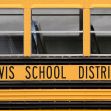Early last week, the Justice Department entered into a settlement agreement with the Nashua School District of New Hampshire over violations found in the school district’s English as a Second Language (ESL) programs. The investigation found “widespread failures” to support English Language Learners which barred those students from actively and equally participating in other school and district-wide programs.
English Language Learners (ELL) refer to any student with limited English proficiency from any nation of origin. According to the most recent data from the National Center for Education Statistics, ELLs make up 9.5 percent of U.S. public school enrollees. While Spanish is the most common first language of ELL students, other major native languages of students include Arabic, Chinese, and Vietnamese. Arabic is the second-most common language spoken by ELL students in New Hampshire.
When the investigation began, the Nashua School District was home to 1,346 English Language Learners with more enrolling every semester. The district had a total of 23 English Language Learner teaching positions and announced more would be added after funding for the school year was approved.
In July 2019, the Department of Justice initiated an investigation under the Equal Educational Opportunities Act (EEOA) and found that the school district “fail[ed] to provide sufficient [English Language] services to hundreds of [English Language] students.” Furthermore, they discovered the school district denied their English Language students “the ability to participate meaningfully in their core subjects” due to the district's lack of certified ESL Teachers, sufficient curricula, and ways to adequately identify and monitor a students’ progress.
Following the investigation, the parties entered into a settlement agreement as an alternative dispute resolution measure. The Settlement Agreement provided a list of actions the school must adhere to for compliance with the EEOA. These actions include improving their process for identifying ELL students, ensuring that the school district has enough certified ESL teachers, training teachers of all subjects how to support students in these programs, improving communication with the parents of students who have limited English, and monitoring the students’ progress throughout the program and following completion.
The Equal Educational Opportunities Act of 1974 prohibits schools from discriminating against students based on “gender, race, color, or nationality and requiring public schools to provide for students who do not speak English.” Section 1703(f) of the EEOA obliges public school districts to take “appropriate action” to ensure students learning English as a second language can fully and equally participate in school activities.
When the Department of Justice investigates complaints, officials consider three main factors to decide whether a school complies. First, they look at the school district’s educational theory or principles. Next, they analyze if the district’s programs are implemented adequately to the theory they’ve adopted. And lastly, they examine the results of a school’s program to see if language barriers are overcome and if the length of the program is adequate to prove successful for students.
In 1974, the Supreme Court ruled that the EEOA also mandates schools to provide adequate resources for all students regardless of their first language. This means that schools must provide non-native English speakers all courses in the students’ first language while they are learning and mastering English.
Then, in a 1982 Supreme Court ruling, the EEOA was expanded to cover undocumented students residing in the United States. The Court stated that not only are undocumented students allowed in public schools but they are obligated to attend. This ruling extended the benefits and mandates of the EEOA to undocumented students. The Census Bureau’s 2016 American Community Survey, however, found that most U.S. public schools that have ELL students are U.S. citizens.
During the investigation, the school district stressed that they did “not disagree with the concerns” and “were very proactive” in making the changes before the Department opened the investigation. The Department of Justice commended the school district for its cooperation during the investigation. The Principal Deputy Assistant Attorney General Pamela Karlan stated after the investigation that “School districts must step up and give English learners the language services and supports they are entitled to under federal law.”






